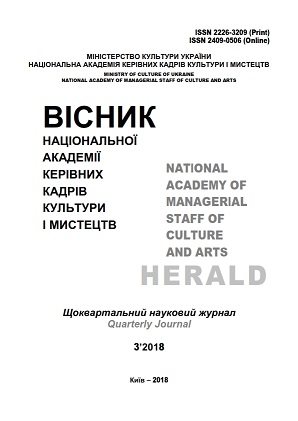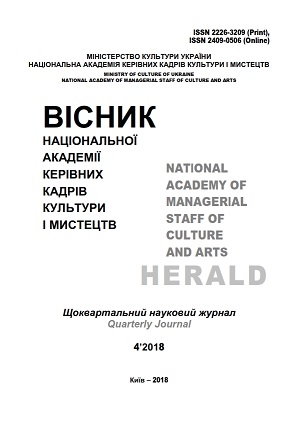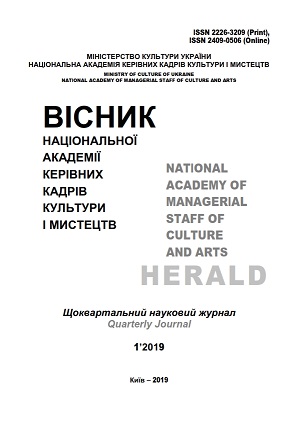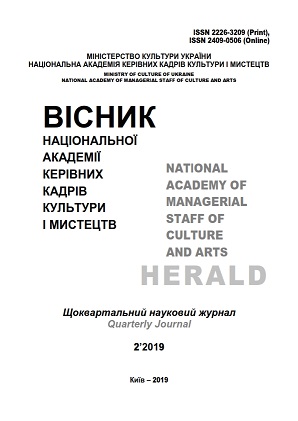Концепт «народна творчість» у культурологічному знанні
Purpose of Article. The aim of the study consists of the disclosure and elucidation of the theoretical and methodological basis of the «people's creativity» concept in cultural knowledge. The methodology is formed on the general principles of scientific knowledge, which correspond to the contemporary cultural discourse. The mentioned fact led to the use of further research methods: system-analytical - to study the philosophical, culturological, art history literature on the chosen problem; system-structural - for the purpose of the profound study of the essence of the chosen concept as a complex cultural and artistic phenomenon of the Ukrainian and world’s artistic culture; formal and comparative methods - to analyze the essence of the «people's creativity» concept, an understanding of its components.of the study is to apply formal and comparative methods to study aspects of preserving popular culture in the context of the current difficult times. The scientific novelty of the work aims to reveal the essence of the notion of «folk art», as well as the related terms of definition, in particular: «amateur art», «folklore», «amateur», «artistic amateurism». During the study, the profound analysis of the relevant sources that outline and actualize the problems and the results of their place in cultural science knowledge was conducted. Conclusions. The theoretical and methodological foundations of the «folk art» concept within modem cultural knowledge are revealed and clarified. The «folk art» is defined as a component of a common culture that is formed and manifested in the process of life, historically and socially predetermined by the product of life and creativity of people. A universal social phenomenon and a product of the historical development of the society, «folk art» and «folklore» synthesize the spiritual consciousness, activity and behavior of people in the sphere of social relations and a qualitative indicator of the way of citizens’ life were realized within the context of the mentioned cultural values.
More...



